I hear giggling. It’s a muffled, hand-over-the-mouth kind of giggling, but it’s giggling nonetheless. The giggles are coming from a huddle halfway down the trail leading to the fish ladder on the river. The curious nature of the reporter in me must investigate the giggles so I sling my camera pack onto my back and hike to the huddle. I’m short so my small stature blends in nicely with the fifth graders who maintain their low laugh when I join them. Their heads are down and I see why. There’s a tangled ball of mating snakes in the middle of the dirt walkway. The mating mass is the reason for the ruckus. I giggle too because I know this outdoor school, also known as Trout in the Classroom, is full of the unexpected and snakes are just the beginning.
“Since we’ve brought in Trout in the Classroom, we’ve seen our test scores jump on average over 20%,” says Matt Lyon, 5th grade science teacher in Ashton, Idaho. “Makes a big difference when you can get out into the middle of what the textbooks are talking about and make it real for the kids.”
About 100,000 students annually raise trout, salmon or steelhead in their classrooms. Trout Unlimited is the nation’s main non-profit organizer, but state agencies, volunteers and other organizations also run and fund the youth program.
“The program fits really well in sustaining our mission with the next generation and it’s a program that matches up well with what our members like to do,” says Franklin Tate, Trout Unlimited headwaters youth program director. “It encapsulates what Trout Unlimited is about.”
According to Trout Unlimited, Maryland has the most active TIC program in the country and it’s staffed by volunteers. In Idaho, Idaho Department of Fish and Game tailored TIC to match Idaho fisheries. Narrowing the concept down further, Henry’s Fork Foundation funds the $2,000 program in eastern Idaho’s Henry’s Fork watershed. That’s where students raise trout in tanks then release them in the Henry’s Fork of the Snake River at the end of the school year.
“A lot of science is pretty abstract for grade school kids until they see a living creature,” Tate says. “It teaches water, science and local river connection with conservation ethic.”

The ethics lesson includes reminders to wet hands before handling fish as the kids watch trout of all sizes trying to reach their spawning beds. A fish ladder bypassing the dam helps them get there. A trap at the top of the ladder holds the trout for a few hours so biologists can count them then send them upstream to spawn. The kids understand every step in the process from there.
“The moms bury the eggs in the gravel and they leave them. They don’t come back for the eggs,” says Taylyn Cordingley, age 11. “At first they’re called eyed eggs and when they hatch, they are called alvins.”
The kids run their fingers through a bucket of fingerlings being counted by biologists then help release the new swimmers into the waterway nursery where they’ll grow naturally over the summer.

These 11-year-olds are really into this adventure and I’m happy to document their excitement. They crave the unique outdoor learning experience from essays they write under a shady pine, to fly lines they cast with stern clumsiness in the open meadow. They pick through fly boxes and compare fish tales just like their parents would. They keep going back to the buckets to count more fish just like curious kids should. It’s a learning experience, just not in traditional textbook format so the students don’t even realize the education factor. They just know this trout trip is better than books and offer this advice:
“Keep a lookout for all types of organisms even if they’re pretty small,” says Matt Huttinger, age 11. “If you study them hard enough, some things that look boring are actually not.”




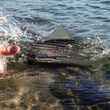
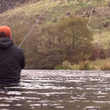

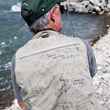




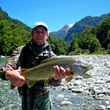



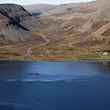
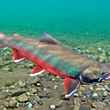



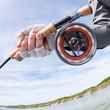
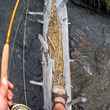



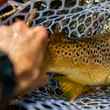
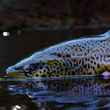
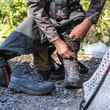

Comments
Vicki Huttinger replied on Permalink
I love this article!! It is actually Mark Huttinger, not Matt Huttinger though who was quoted toward the end of the article. Thank you for bringing attention to such a wonderful program!
Pages